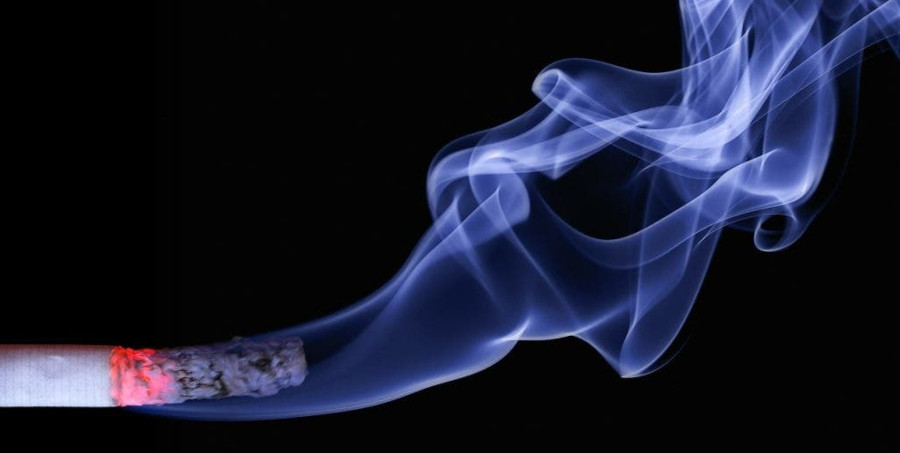Avoiding smoking and exposure to secondhand smoke is essential for maintaining good health, as both active smoking and passive exposure to tobacco smoke are associated with numerous health risks. Here are more details on this topic:
The Dangers of Smoking:
Smoking is a leading cause of preventable diseases and deaths worldwide. It is associated with various health risks, including:
- Lung Cancer: Smoking is the primary cause of lung cancer, and it also increases the risk of cancers in other parts of the body.
- Respiratory Diseases: It can lead to chronic obstructive pulmonary disease (COPD), chronic bronchitis, and emphysema.
- Cardiovascular Diseases: Smoking is a major contributor to heart disease, stroke, and high blood pressure.
- Pregnancy Complications: Pregnant women who smoke are at risk of miscarriage, preterm birth, low birth weight, and stillbirth.
- Oral Health Problems: Smoking can cause tooth decay, gum disease, and oral cancers.
Secondhand Smoke (Passive Smoking):
Secondhand smoke, also known as passive smoke or environmental tobacco smoke (ETS), is the combination of smoke exhaled by a smoker and the smoke emitted from the burning end of a cigarette, cigar, or pipe.
Exposure to secondhand smoke can have serious health consequences for nonsmokers, including:
- Respiratory Issues: Children exposed to secondhand smoke are at a higher risk of respiratory infections, sudden infant death syndrome (SIDS), and exacerbation of asthma symptoms.
- Cardiovascular Problems: It can increase the risk of heart disease in nonsmokers.
- Cancer: Nonsmokers exposed to secondhand smoke are at risk of developing lung cancer and other cancers.
- Pregnancy Complications: Pregnant women exposed to secondhand smoke may face complications similar to active smokers, including low birth weight and preterm birth.

Benefits of Avoiding Smoking and Secondhand Smoke:
Quitting smoking and avoiding exposure to secondhand smoke offer numerous health benefits, including:
- Reduced Risk of Diseases: Quitting smoking lowers the risk of various cancers, heart disease, respiratory diseases, and stroke.
- Improved Lung Function: Over time, lung function can improve, and the risk of respiratory issues diminishes.
- Enhanced Quality of Life: Ex-smokers often report improved energy levels, better sense of taste and smell, and reduced coughing.
- Protection for Nonsmokers: Avoiding exposure to secondhand smoke protects the health of nonsmokers, particularly children and pregnant women.
Strategies for Quitting Smoking:
If you’re a smoker and want to quit, various resources and strategies are available:
- Nicotine Replacement Therapy (NRT): Products like nicotine gum, patches, lozenges, and prescription medications are used to help manage withdrawal symptoms. Despite the popularity of these products they can lead to more problems for people who are trying to quit smoking, and therefore one should consider other options.
- Counseling and Support: Behavioural counseling, support groups, and counseling hotlines can provide valuable assistance.
- Lifestyle Changes: Incorporating healthier habits, such as regular exercise and stress management, can aid in smoking cessation. Many people have found herbal detox and
The Problem with Nicotine Replacement Therapy (NRT)
Nicotine Replacement Therapy (NRT) is a method used to help people quit smoking by providing a controlled dose of nicotine without the effects of tobacco smoke. NRT is not without its drawbacks. Here are some of the common problems and concerns associated with NRT:
- Addiction Transfer: One of the primary concerns with NRT is the possibility of transferring nicotine addiction from cigarettes to NRT products, such as nicotine gum, patches, or lozenges. Some individuals may become dependent on NRT products, which can make it challenging to quit them as well.
- Cost: NRT products can be expensive, especially if used for an extended period. Prescription options can be especially costly, particularly without insurance coverage.
- Possible Side Effects: NRT products can cause side effects, including nausea, headaches, dizziness, and skin irritation with patches.
- Dosing and Administration: Some individuals may struggle with proper dosing and administration. This can lead to continued cravings and difficulty quitting.
- Long-Term Use: There is limited research on the safety of long-term use. Prolonged NRT use may have health implications.
- Taste and Texture: Some people find NRT products unpalatable or unpleasant to use. This can make it less likely for them to stick with the recommended regimen.
- Lack of Behavioural Support: NRT products address the physical addiction to nicotine but do not provide the behavioural and psychological support necessary for quitting smoking. Many individuals benefit from counseling, support groups, or other behavioural strategies in addition to NRT.
- Not Effective for Everyone: NRT is not a one-size-fits-all solution. While it can be effective for some, it may not work for everyone. Quitting smoking is a highly individualised process, and some people require alternative approaches.
- Misuse and Overuse: Some individuals may misuse or overuse NRT products, using them in conjunction with smoking (dual use) or taking more nicotine than recommended. This may lead to health risks.
- Pre-existing Health Conditions: NRT may not be suitable for individuals with specific pre-existing health conditions, such as heart arrhythmias or severe allergies.
Creating a Smoke-Free Environment:
If you’re a nonsmoker or have quit smoking, it’s important to create a smoke-free environment for yourself and those around you. This includes:
- Establishing a No-Smoking Policy: Declare your home and car smoke-free zones.
- Advocating for Smoke-Free Public Spaces: Support efforts to implement smoke-free policies in public areas, workplaces, and recreational facilities.
- Avoiding Venues with Smoking: Choose restaurants, bars, and entertainment venues that prohibit smoking.
Herbs to Help People to Stop Smoking
Quitting smoking is a challenging endeavour, and while herbs alone may not be a guaranteed solution, some herbs may offer support in the process by helping to reduce cravings, manage withdrawal symptoms, or promote lung health. Here are some herbs that have been suggested for smoking cessation:
- Lobelia (Lobelia inflata): Lobelia, also known as Indian tobacco, has been historically used to help people quit smoking. It contains alkaloids that may mimic the effects of nicotine and reduce withdrawal symptoms. However, it can be toxic in high doses, so it should be used under the guidance of a herbalist or natural health practitioner.
- Valerian (Valeriana officinalis): Valerian is an herb known for its calming properties. It may help reduce anxiety and stress associated with quitting smoking, making it easier to cope with cravings.
- Passionflower (Passiflora incarnata): Passionflower is another herb with anxiety-reducing effects. It may help with relaxation and mood stabilisation during the smoking cessation process.
- Cayenne Pepper (Capsicum annuum): Some people find that cayenne pepper can help reduce cigarette cravings when sprinkled on food. It can also improve lung function.
- Licorice Root (Glycyrrhiza glabra): Licorice root may help reduce cravings and support lung health. However, it should be used in moderation, as excessive consumption can lead to high blood pressure and other side effects.
- Rhodiola (Rhodiola rosea): Rhodiola is an adaptogenic herb that may help improve mood, reduce stress, and boost energy levels, potentially aiding in the smoking cessation journey.
It’s important to remember that herbs alone are not a substitute for a comprehensive smoking cessation plan, which may include behavioural counseling, and support groups. Quitting smoking is a highly individualised process, and what works for one person may not work for another.
In conclusion, avoiding smoking and minimising exposure to secondhand smoke is crucial for protecting your health and the health of those around you. If you smoke and want to quit, seek support and resources to help you on your journey to a smoke-free life. Additionally, advocating for smoke-free policies in your community can contribute to a healthier environment for everyone.
References
NIDA – Tobacco/Nicotine – https://www.drugabuse.gov/drug-topics/tobacco-nicotine
American Lung Association – Quit Smoking – https://www.lung.org/quit-smoking
CDC – Smoking & Tobacco Use – https://www.cdc.gov/tobacco/index.htm
This article is copyrighted by Ital is Vital, 2025. Want to re-post this article? Visit our guidelines.
DISCLAIMER: THIS WEBSITE DOES NOT PROVIDE MEDICAL ADVICE
The information, including but not limited to, text, graphics, images and other material contained on this website are for informational purposes only. The purpose of this website is to promote broad consumer understanding and knowledge of various health topics. It is not intended to be a substitute for professional medical advice, diagnosis or treatment. Always seek the advice of your physician or other qualified health care provider with any questions you may have regarding a medical condition or treatment and before undertaking a new health care regimen, and never disregard professional medical advice or delay in seeking it because of something you have read on this website.
